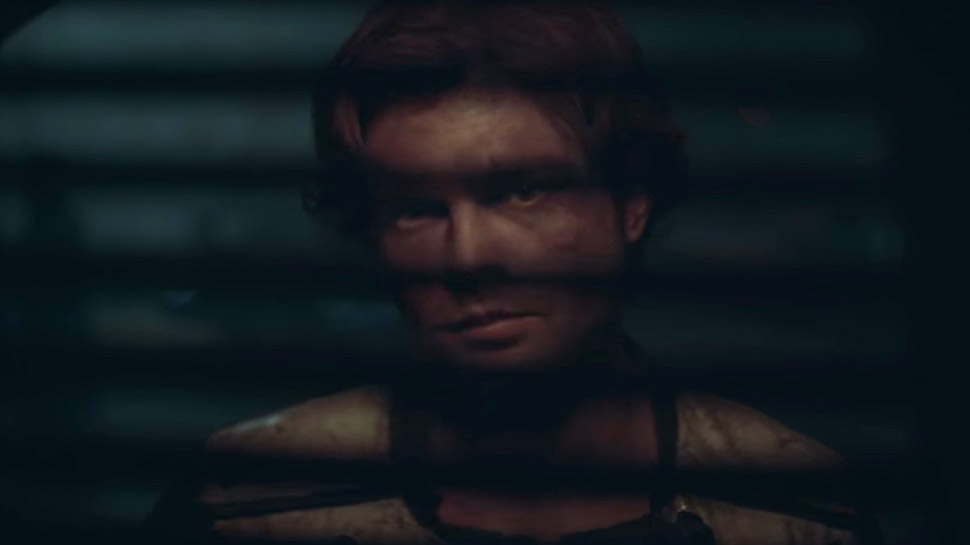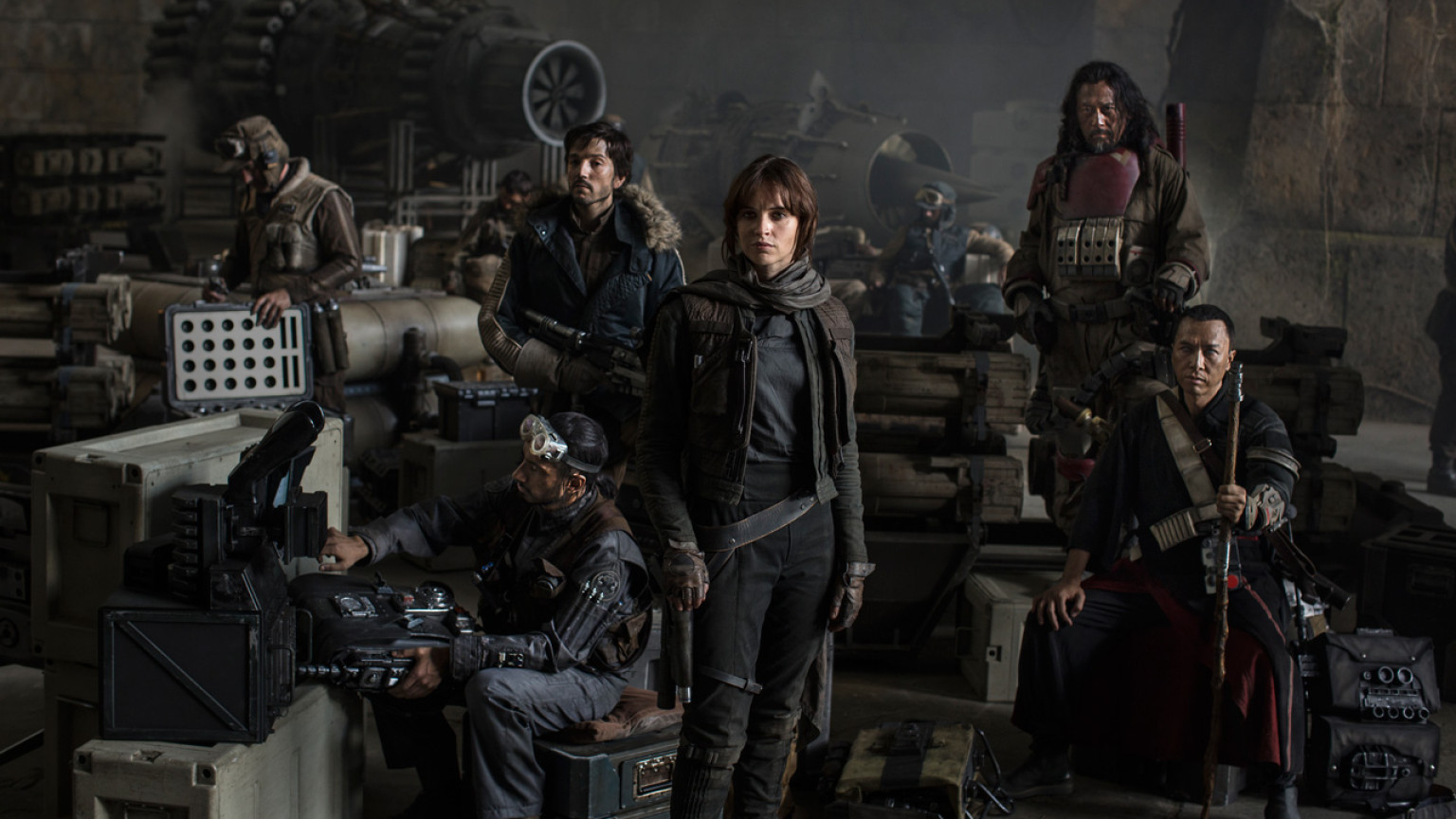Star Wars: Solo and Lucasfilm’s Two-Pronged Franchise
Following the launch of the first Solo trailer, we ponder the future of Lucasfilm’s two-strand Star Wars franchise...
The following contains spoilers for Rogue One and Star Wars: The Last Jedi.
“I thought we were in trouble there for a second, but we’re fine…”
Those words, among the last in the new teaser for Solo: A Star Wars Story, could easily apply to the film itself. With its production beset by its much-publicized change in directors (exit Lord and Miller, enter Ron Howard) and an extensive bout of reshoots, Solo hasn’t had the smoothest path to the silver screen.
With a confident swagger worthy of the Corellian smuggler, Disney’s managed to get the internet chattering with Solo’s first trailer – a rapid-fire tour of its forthcoming spin-off. Broadly speaking, it’s predictable stuff: there’s the new Han, played by Alden Ehrenreich; here’s the young Lando (Donald Glover), who looks as though he’ll steal every scene he’s in. Chewie’s back, of course, this time played by Joonas Suotamo. And the Millennium Falcon’s here, albeit far less battered than we’ve seen in Han Solo’s other outings.
The trailer leaves plenty of blanks to fill in: whether there’s more going on with Emilia Clarke’s character, Qi’ra, than the obvious role of a love interest for Solo. What part Woody Harrelson’s mentor-type will play in the whole saga, and at what point the Millennium Falcon will lose that bit of metal that bridges the two sections of its prow.

For this writer, the Solo trailer highlights what appears to be a growing divergence in what’s fast becoming a two-pronged franchise. We’ve known about the structure of the Star Wars release pattern for a good few years now: the numbered episodes, beginning with The Force Awakens in 2015 and continuing with last year’s The Last Jedi, will be interspersed with biannual spin-offs under the Star Wars Story banner. So far we’ve had the Death Star heist prequel Rogue One; Solo’s up next, and it’s thought that movies based on Boba Fett and Obi-Wan Kenobi could be set to follow.
Along with the natural division that those two strands imply – one a continuing saga, the other offering standalone stories from elsewhere in the Star Wars universe – it’s beginning to look as though Lucasfilm’s making subtle yet clear efforts to differentiate them both visually and tonally.
When compared to J.J. Abrams’ triumphant reboot, The Force Awakens, Gareth Edwards’ Rogue One emerged as a much darker film, where the cozy familiarity of old Star Wars tech and characters nestled alongside a plot where death lurked around every corner. It’s also telling that, while both films contained sequences where a vast space station laid waste to a planet, the one in Rogue One packed the greater dramatic punch.

Rogue One’s planets also had a far more elemental, hostile feel to them than those in The Force Awakens. Jedha was a tinderbox of searing heat and guerrilla warfare. The rain-swept planet Eadu is so barren and dank that it could almost have come from the Alien franchise.
A look through the footage for Solo suggests that this new movie will continue in a similar vein. While the plot won’t necessarily be as gloomy as Rogue One’s, its production design feels very much of a piece with the last spin-off’s. Look at the sequence where Solo’s driving Emilia Clarke’s Qi’ra around in what looks like a sci-fi army jeep: it has a rough, dusty sense of age and wear that was present throughout Rogue One.
Now, it goes without saying that the “used future” aesthetic is part of Star Wars’ fabric, and both The Force Awakens and The Last Jedi continued its tradition. But it could also be said that the numbered episodes have put their own spin on this aesthetic, with the tired, scrap yard planet of Jakku joined by the First Order’s cleaner lines and reflective surfaces (as a striking example, check out Captain Phasma’s shiny helmet, if you can stop chortling long enough to do so).

The Last Jedi carried on in the same vein – the battered ships piloted by the Resistance at the end of the film contrasting with the bold colors of Snoke’s throne room or the high-gloss glamour of Canto Bight. In fact, that film’s driving mission appeared to be to distance the franchise from much of what had preceded it. Dozens of recognizable ships and characters were swept away, effectively cleaning the slate for the currently-untitled Episode IX. Whatever happens next in the mainline franchise, it’s clear that this branch of the Star Wars universe has changed forever.
While it had its darker moments, The Last Jedi remained, by and large, a romp: we got Finn and Rose bounding around on the back of a long-eared beast of burden; BB-8 being man-handled by a drunken, Leprechaun-like creature in the middle of a casino; plus General Hux’s repeated prat falls. This was a film going all-out to broadly entertain.
There’s no reason to imagine that Solo won’t be similarly eager to please, but we can’t help wondering whether Lucasfilm’s consciously targeting a slightly older audience with its Star Wars Story spin-offs. For one thing, the stories they tell are tailor-made to hook in movie-goers old enough to affectionately remember the Original Trilogy.
Listen to the Star Wars Blaster Canon podcast:
Subscribe: Apple Podcasts | Stitcher | Soundcloud
“Stealing plans for the Death Star” is a phrase far more likely to send a shiver down the spine of a 26- or 36-year-old Star Wars fan, for example, than a nine year old whose earliest memory of the franchise was watching The Force Awakens back in 2015.
Likewise Solo: younger fans will know the character as the grey-haired chap who showed up for a few minutes or so in The Force Awakens. It’s the older generation who’ll want to know exactly how Han won the keys to the Millennium Falcon. That Solo’s production design rightly plays up its retro-future look (all chunky levers and boxy, jeep-like vehicles) merely helps reassure its target audience: don’t worry. This is Star Wars as you remember it.
The Last Jedi concluded with a shot of a young boy looking up at the stars, his hand clutching a broomstick like a Lightsaber. It was a reminder, perhaps, of who the franchise is aimed at, and its storytelling roots: this is a fairy tale for kids, albeit one that grown-ups can enjoy, too.
So while the numbered sequels forge ahead into an unknown future, with The Last Jedi’s Rian Johnson set to helm an entire trilogy of sequels after next year’s Episode IX, the spin-offs seem set to explore the half-forgotten corners of the past.
Ironically, it’s here, in the midst of familiar characters like Han Solo and Lando Calrissian, or mechanical icons like the Millennium Falcon or the Death Star, that the franchise seems to be finding its darker edge. After all, the cast of Rogue One didn’t exactly come out of that story well. Aside from Han, Chewie, and Lando in this year’s A Star Wars Story, what’ll happen to the rest of its characters is anyone’s guess.
Solo: A Star Wars Story opens on May 25.
The Geek’s Guide To SF Cinema by Ryan Lambie (Robinson, 15th February, £12.99) is available in the UK from Amazon and The Book Depository, in Australia from Dymocks and Amazon and in New Zealand from Mighty Ape.